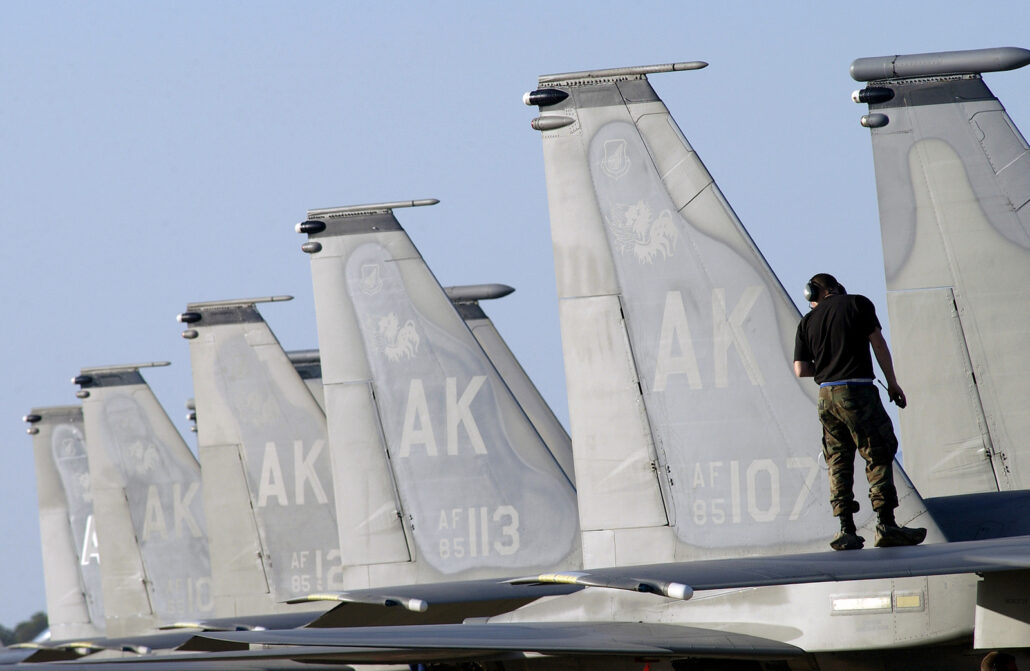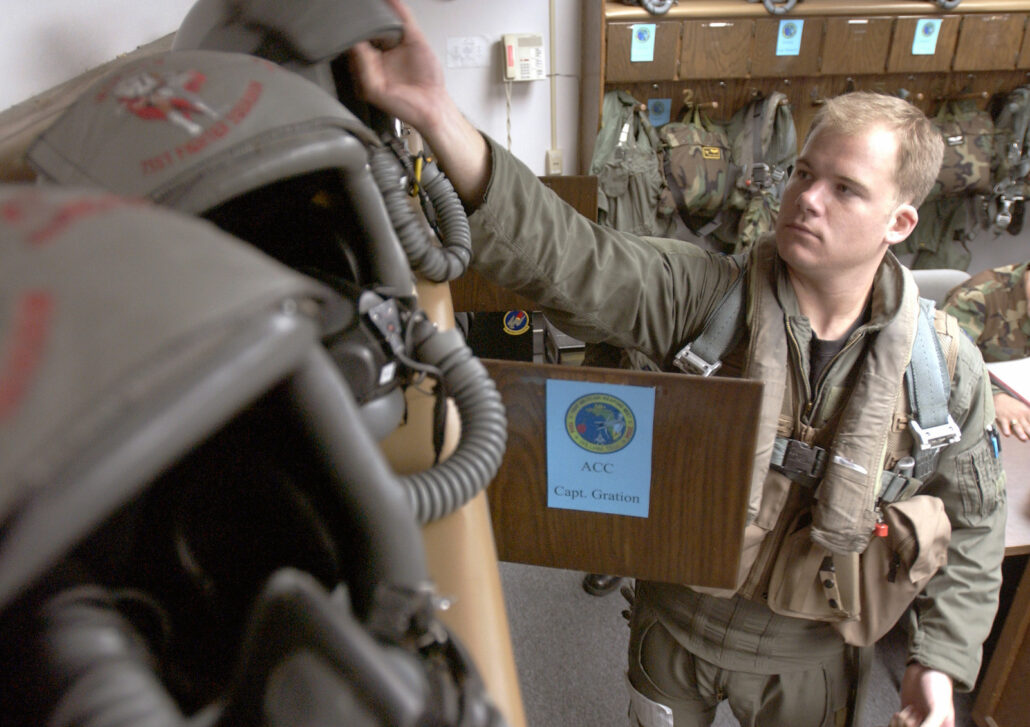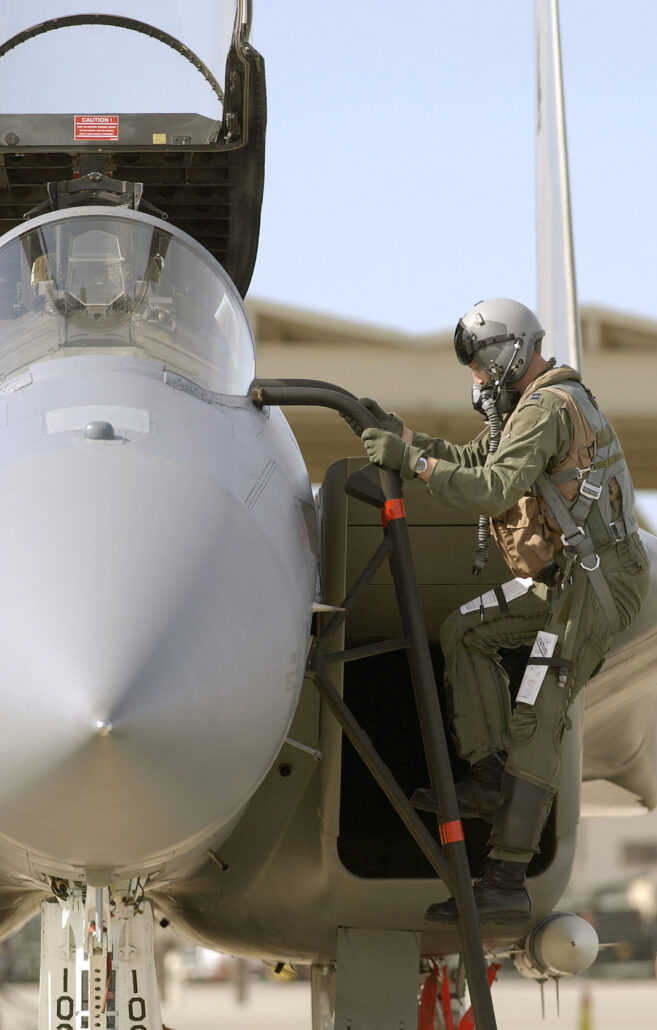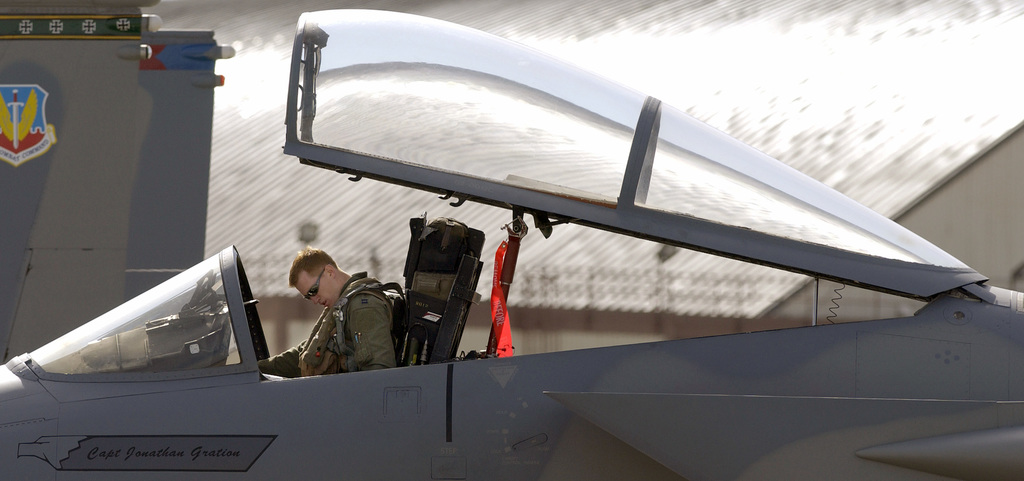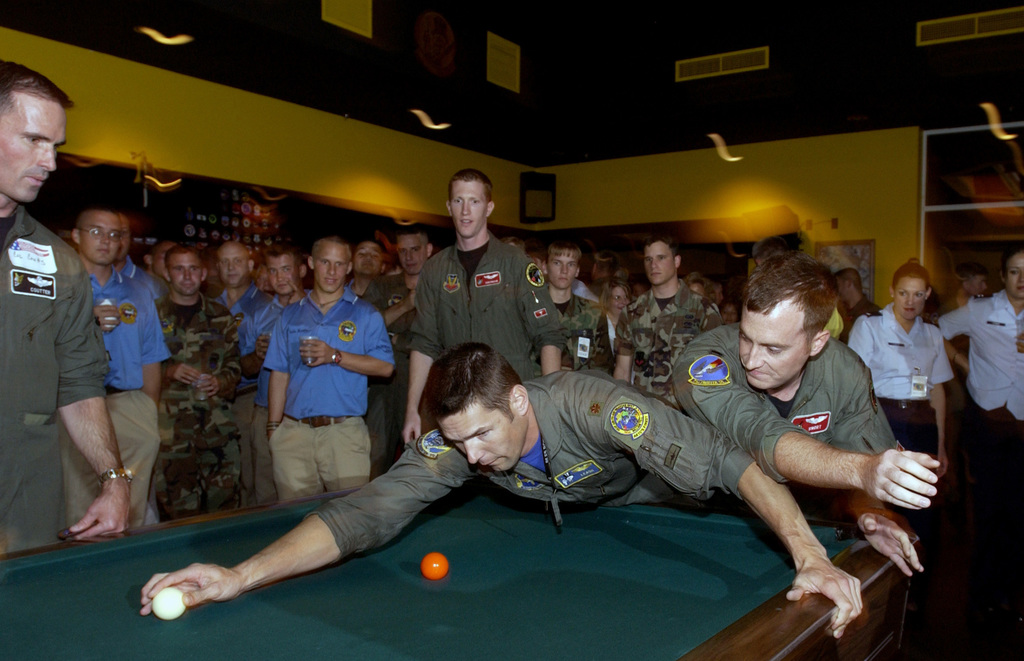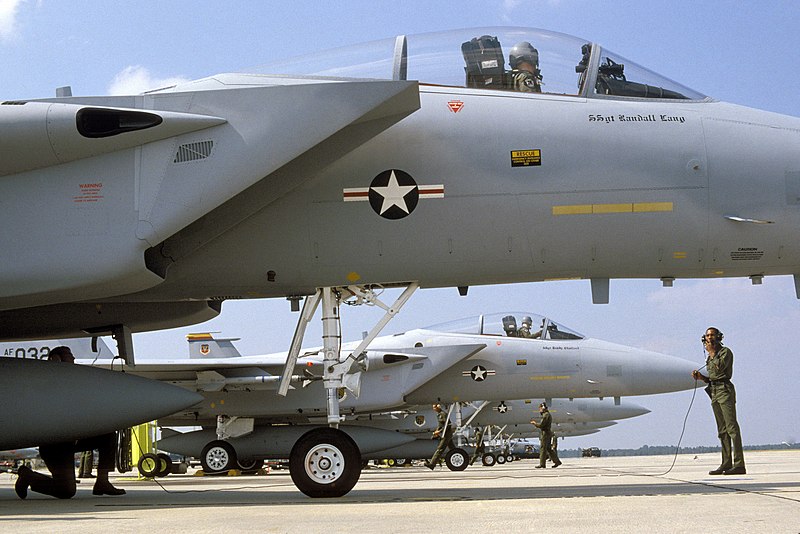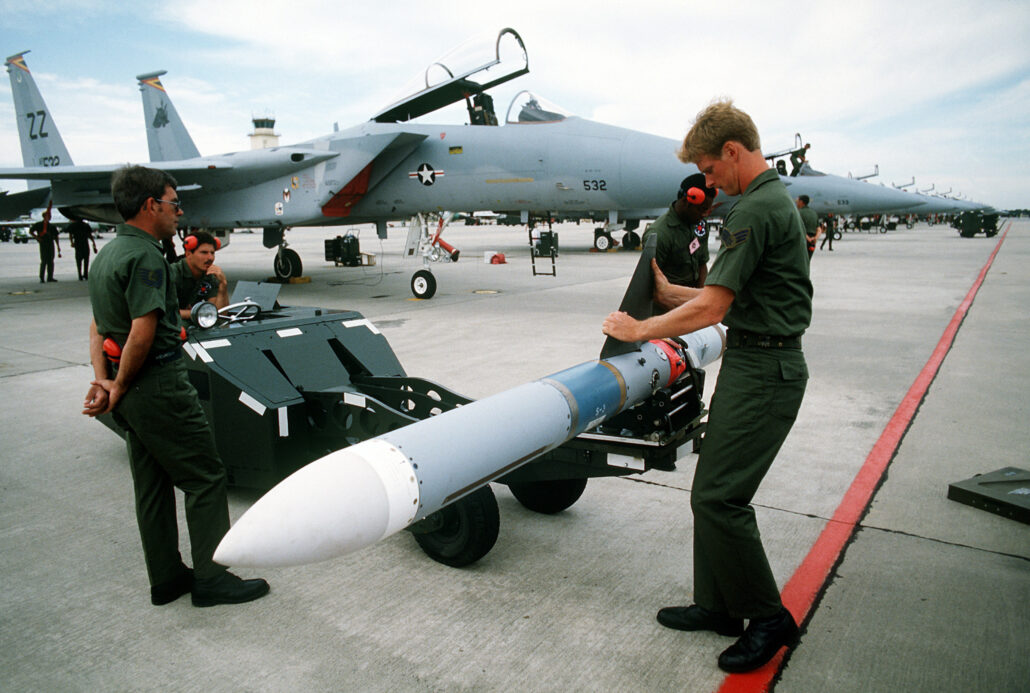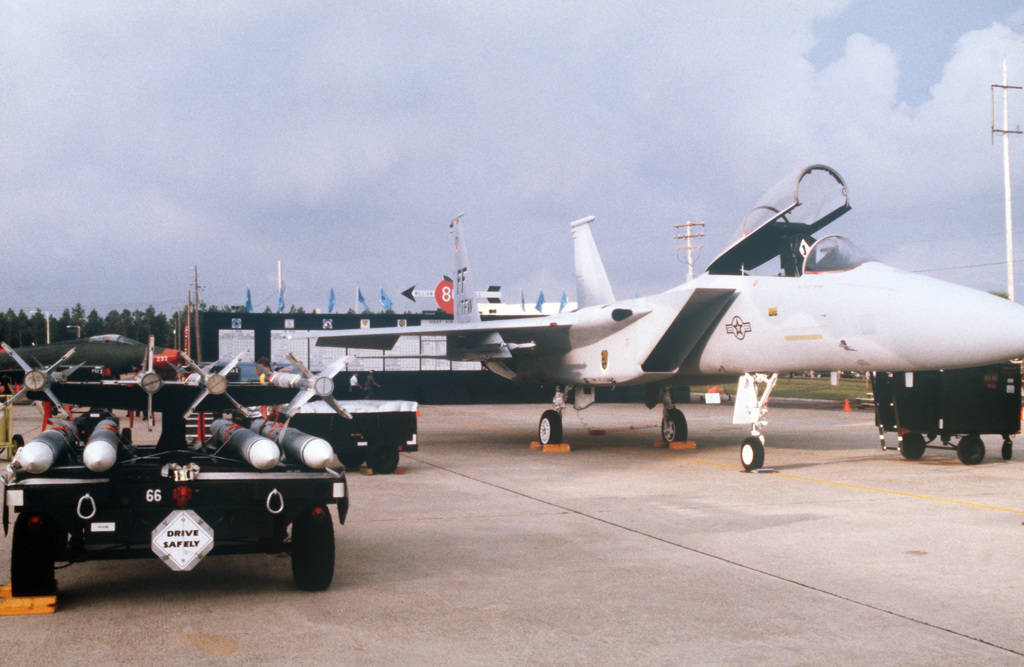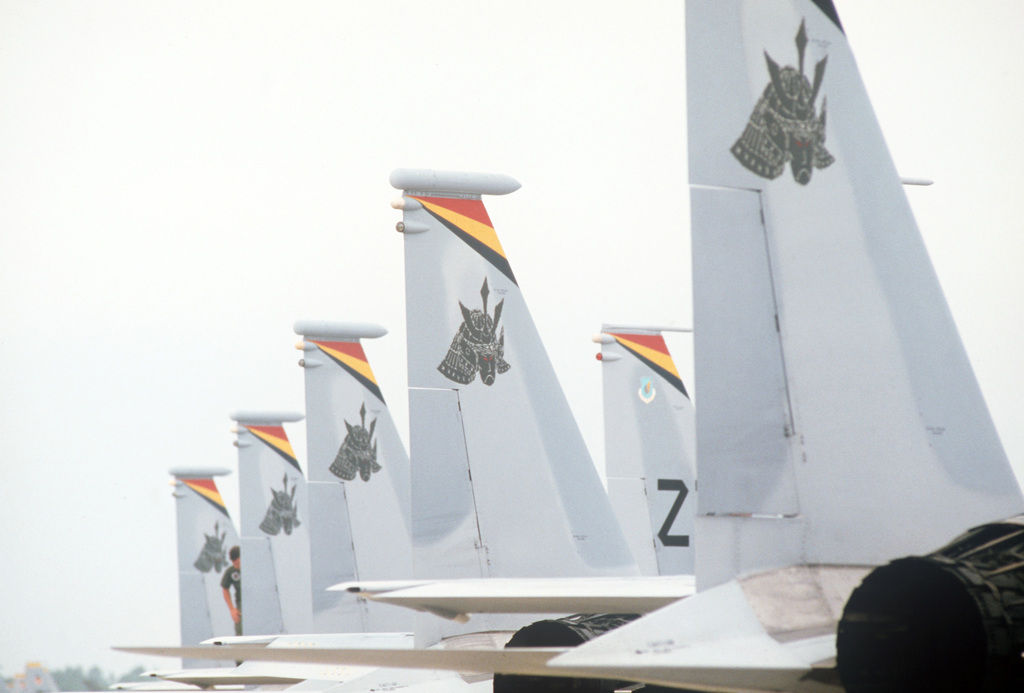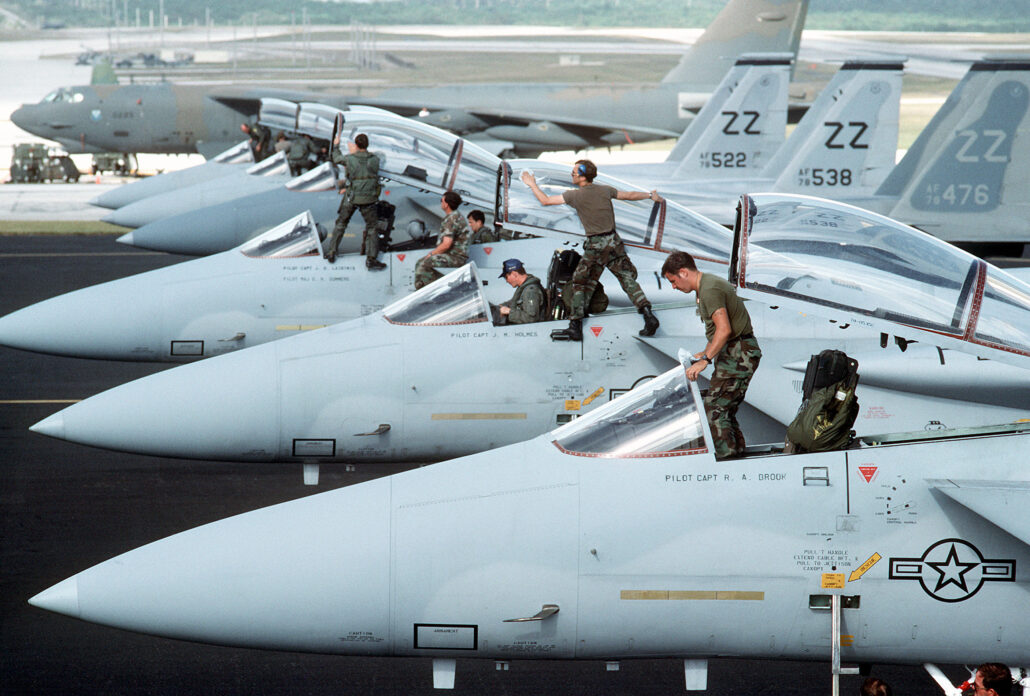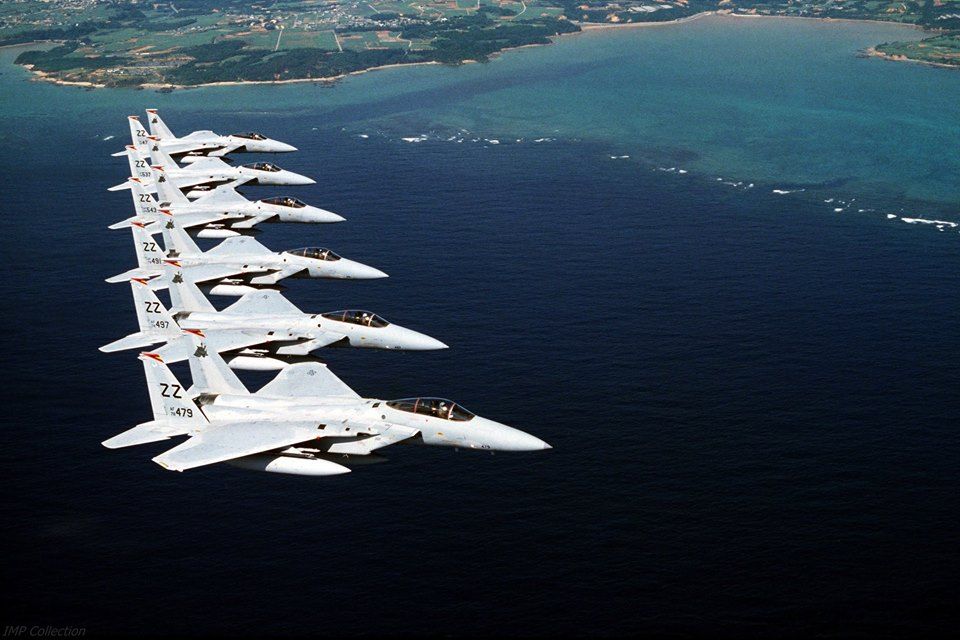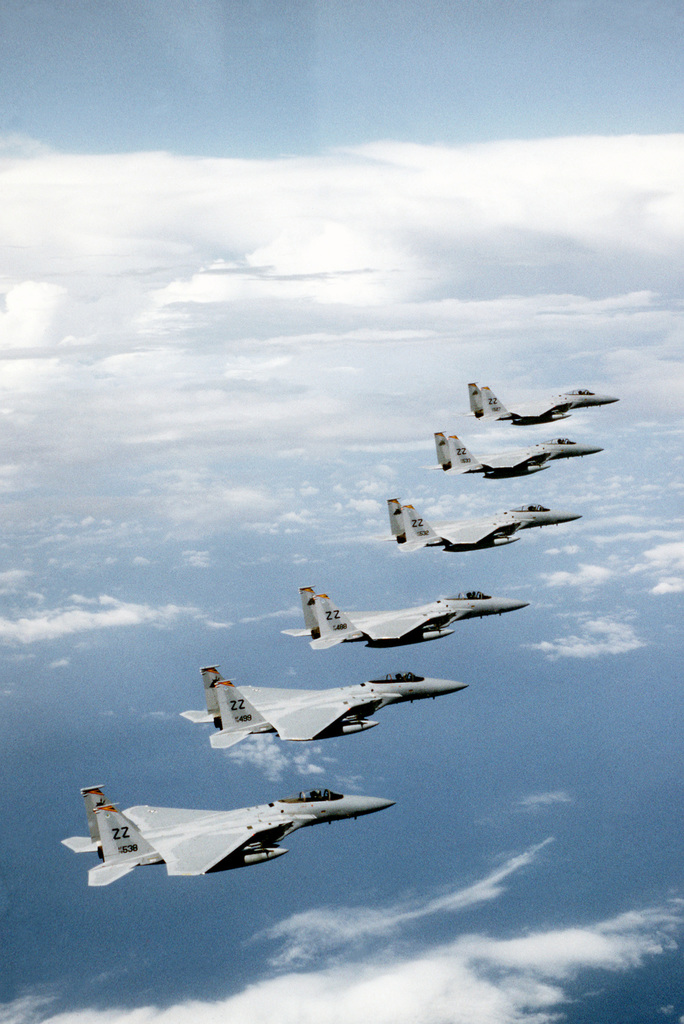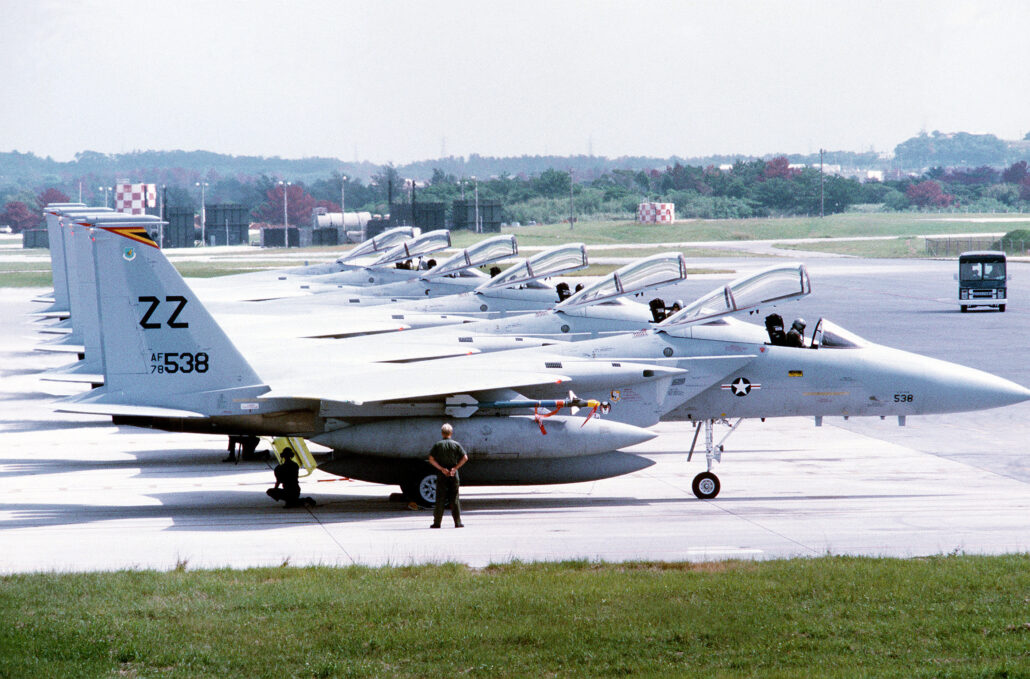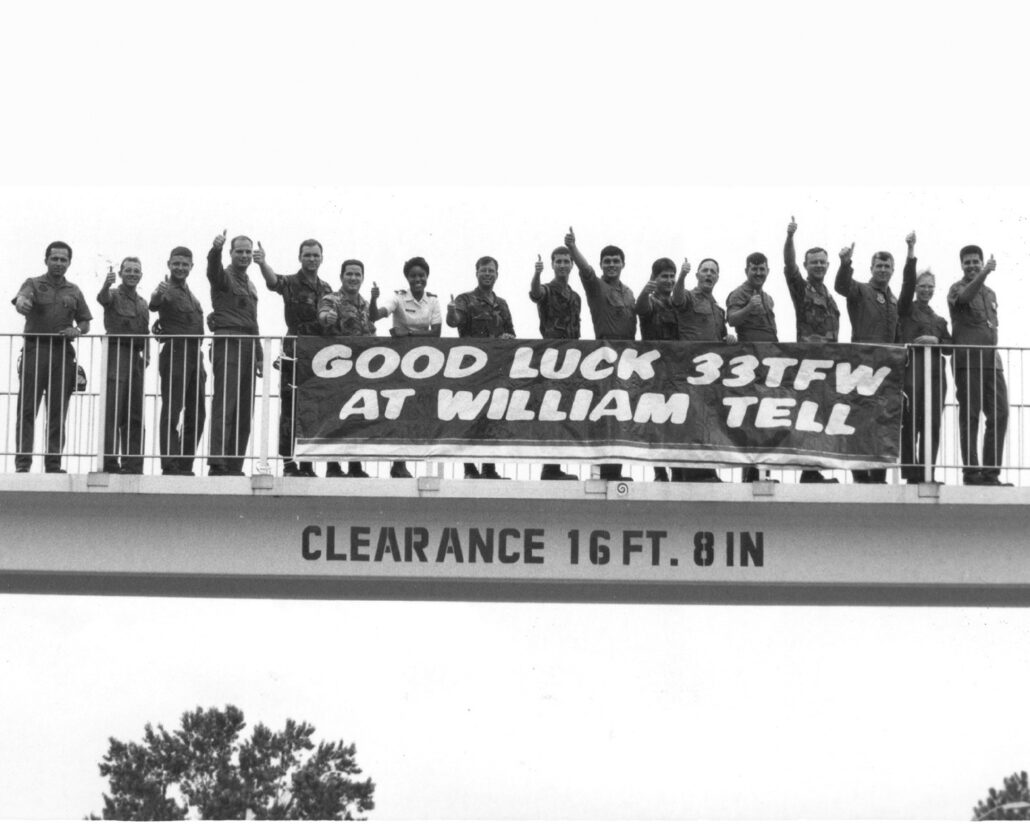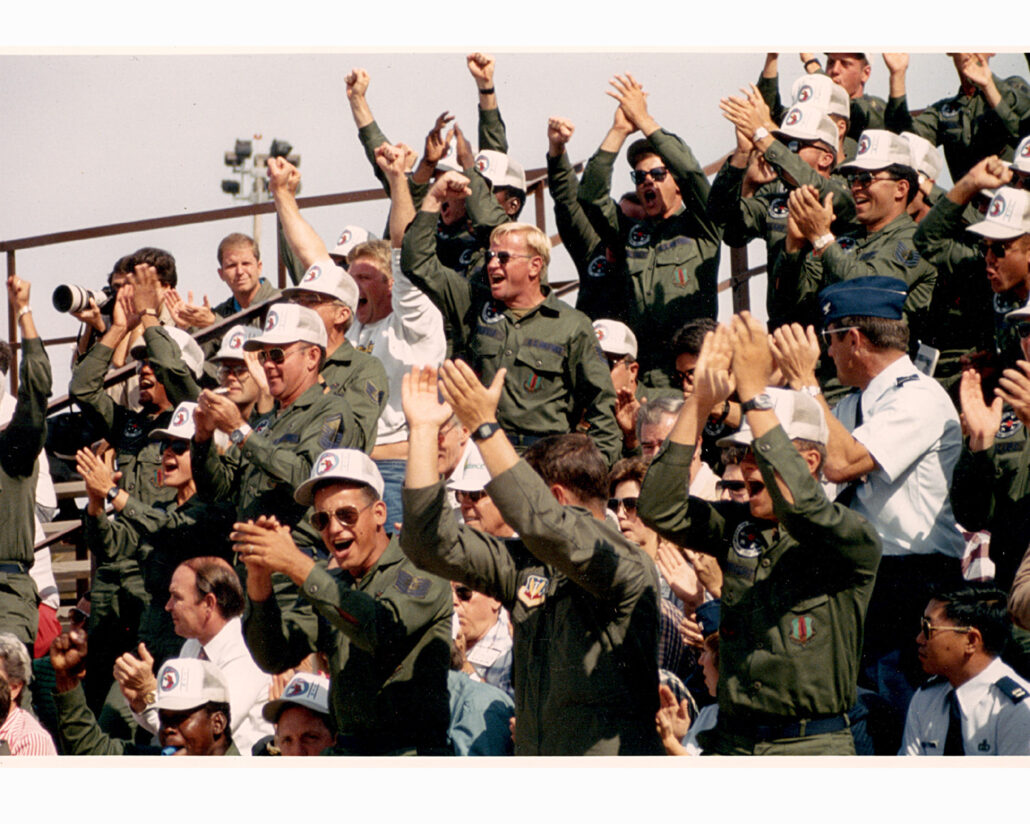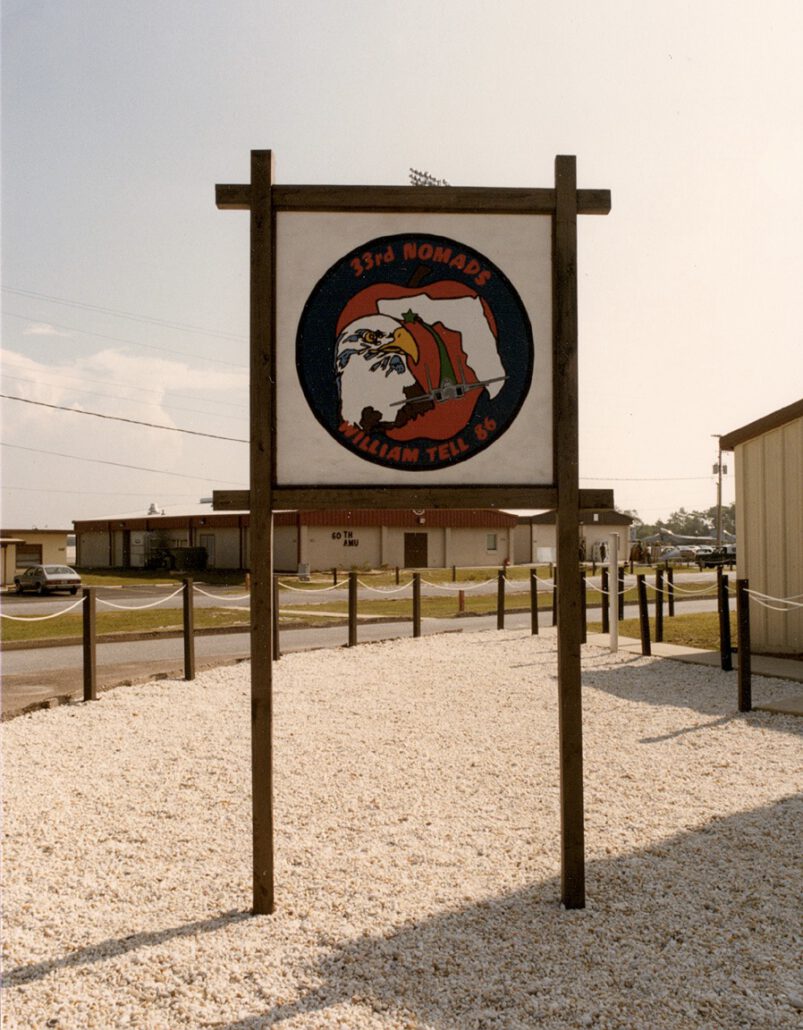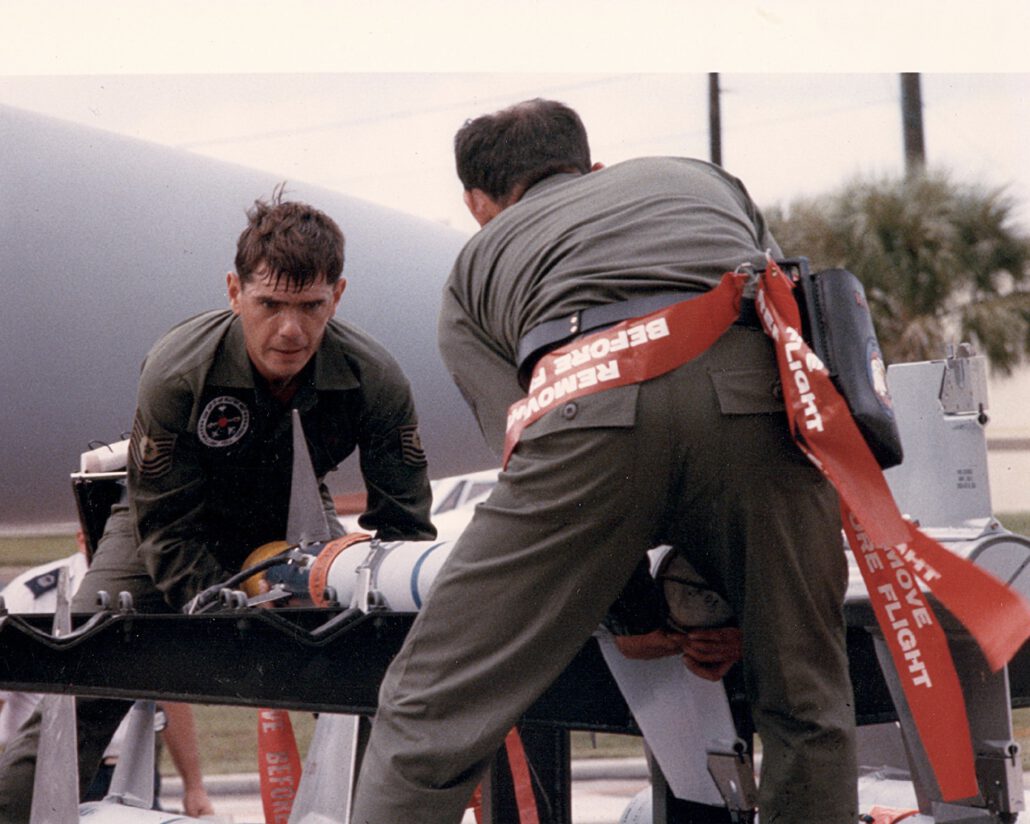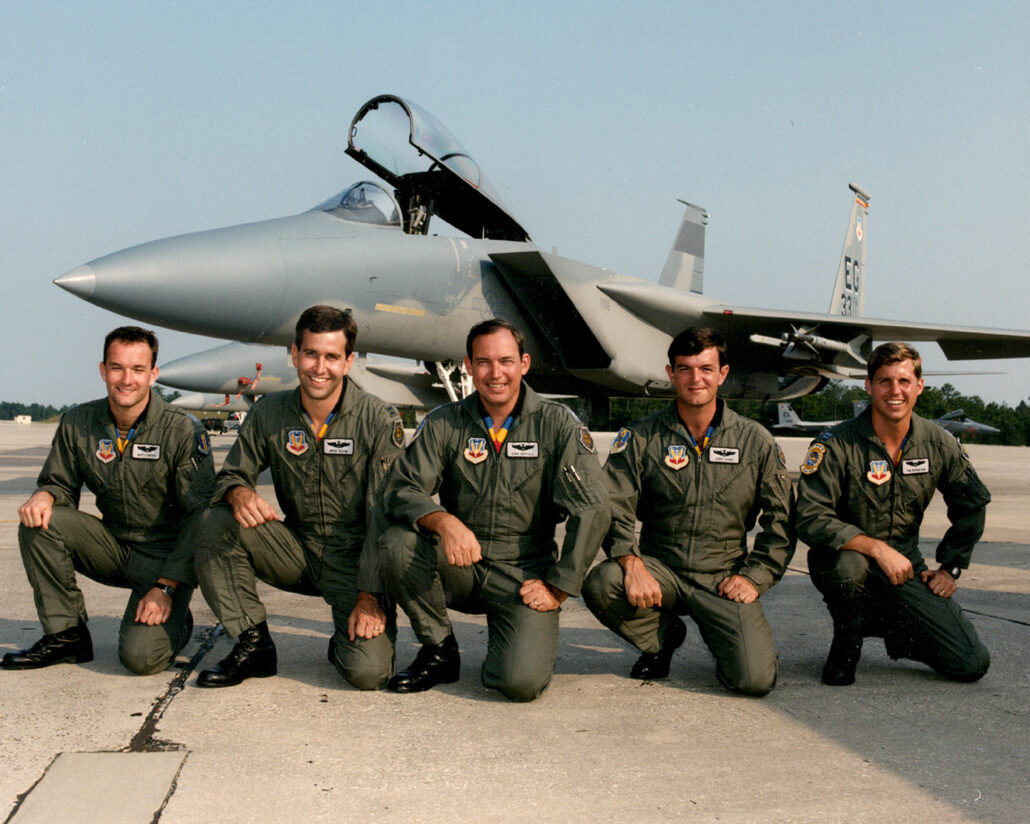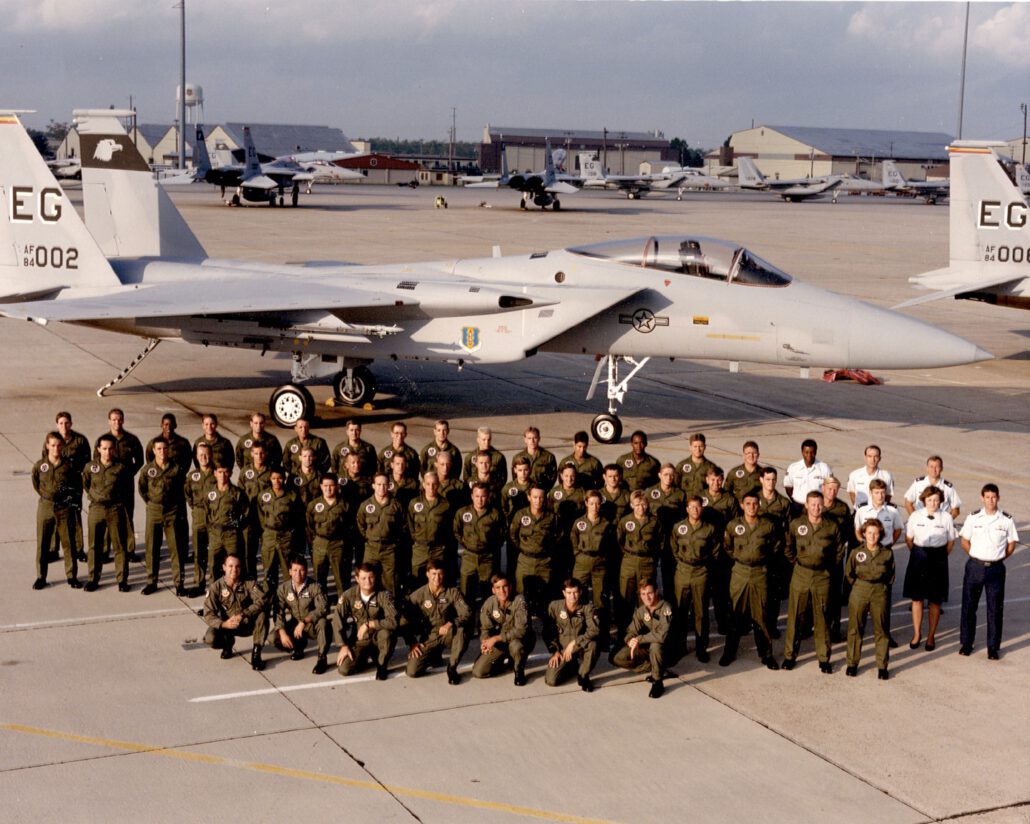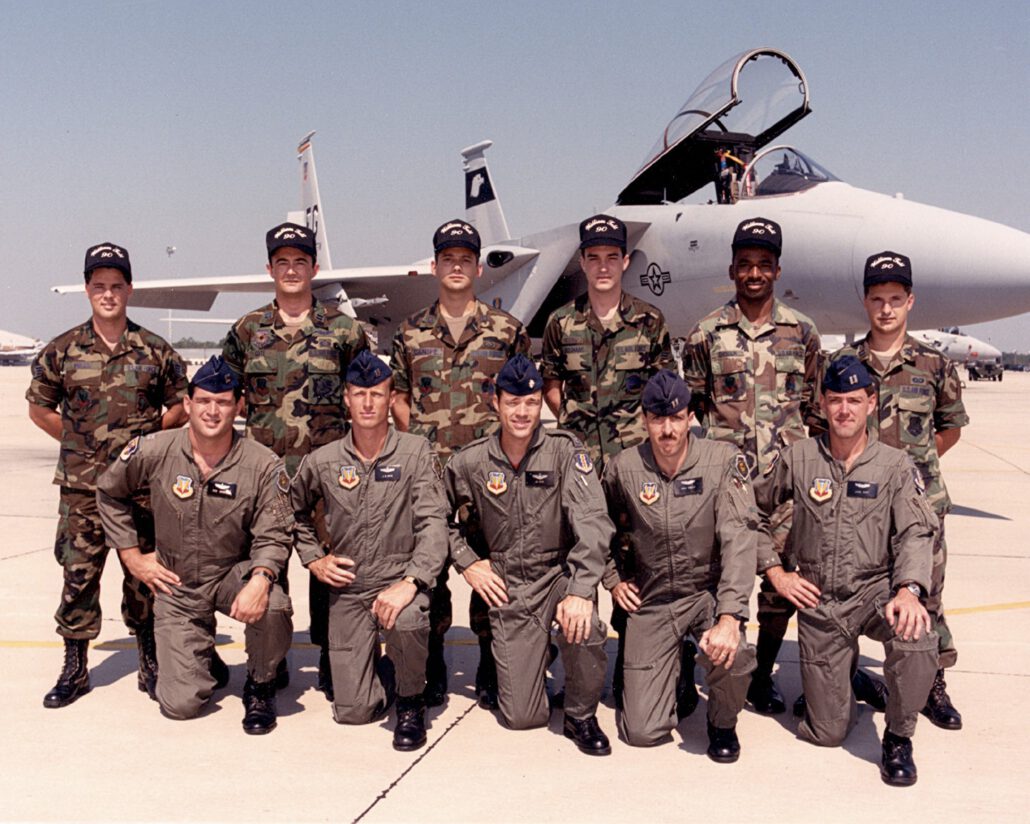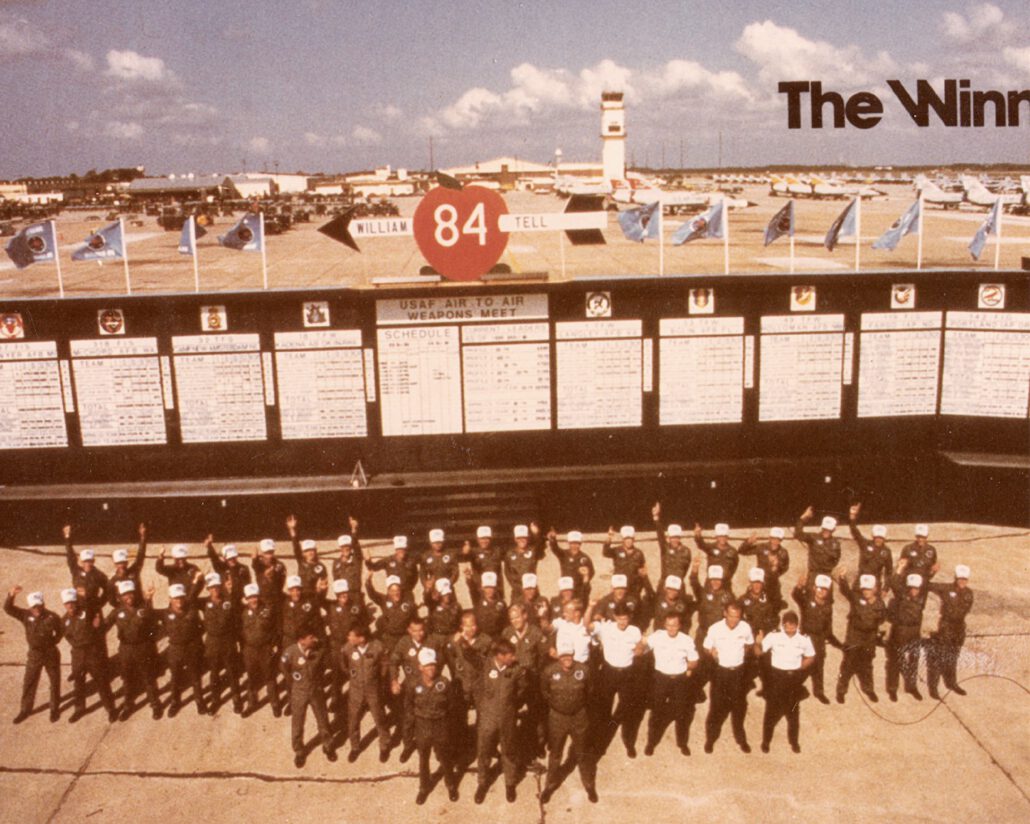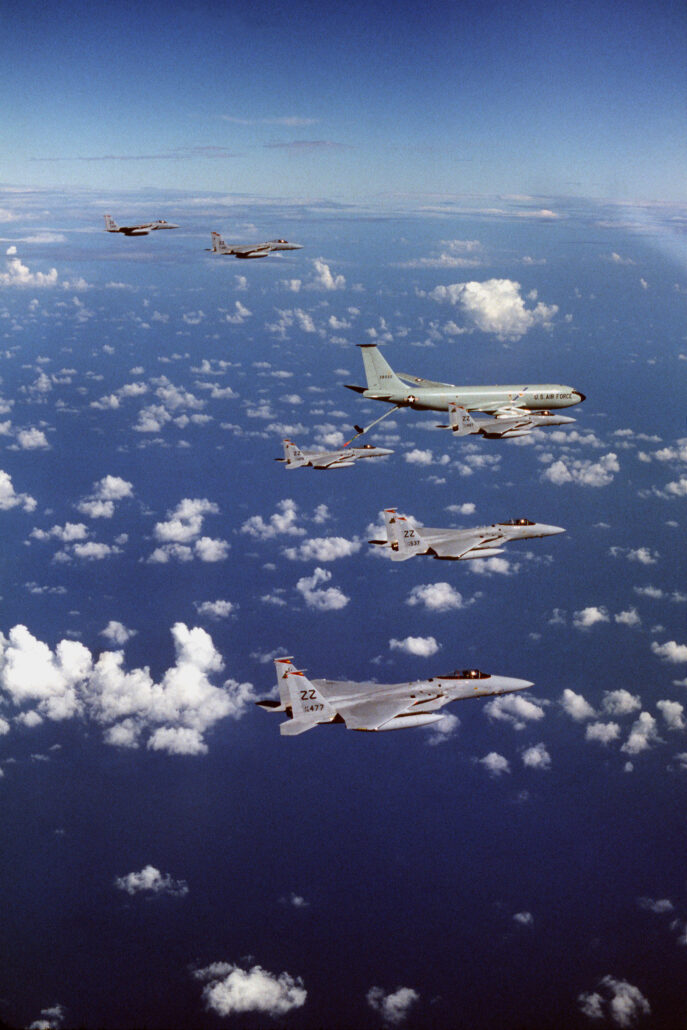In June 1954, the USAF’s World Wide Weapons Meet now known as “William Tell” began as a separate air-to-air rocketry competition to the Third Annual USAF Fighter gunnery and Weapons Meet that was held at Las Vegas AFB (later renamed as Nellis AFB). This Interceptor Phase of the Las Vegas based competition would be held at Yuma, AZ. The Air Defense Command and Air Training Command were the sole competitors of the first meet . In 1956, the meet was unofficially given the name of “William Tell” and had expanded to include nine teams representing seven major air commands. This third meet was the last held in Arizona.
Two years later, Tyndall AFB, Fla., became the home for the USAF Worldwide Air-to-Air Weapons Meet. The radio controlled Q-2A drone target and the PARAMI, an electronic scoring system, made their first appearances during this meet and for the first time, competitors were divided into three categories, one for each aircraft participating. Twelve teams competed in the 1958 meet and among them was an Air National Guard unit competing for the first time.
For the 1961 William Tell, three jets specifically designed for protecting North America appeared on the flight line; the F-102 Delta Dagger, the F-106 Delta Dart and the F-101 Voodoo. William Tell 1965 was the largest in history with 16 teams and four categories. Canada became the first foreign country to participate in William Tell and entered with the CF-101 Voodoo’s. After a five-year period, imposed by the Vietnam War, William Tell resumed at Tyndall AFB with nine teams competing.
The 1972 meet was the year of the first “Top Gun” award, and the introduction of the subsonic BQM-34A Firebee target drone into the competition. The 1974 composition saw the Air National Guard teams take first place in three major categories and in 1976, the ANG continued its winning streak in two of the three. The F-4 Phantom II made its first appearance in the meet in 1976, The F-4 unit was the first Team sent by the Tactical Air Command .
With the reorganization of air defense forces in 1979, TAC assumed sponsorship for William Tell. The first TAC-sponsored meet in 1980 included 10 teams from active duty F-4 and F-106 units, ANG F-4, F-106 and F-101 units, and a Canadian Forces CF-101 unit.
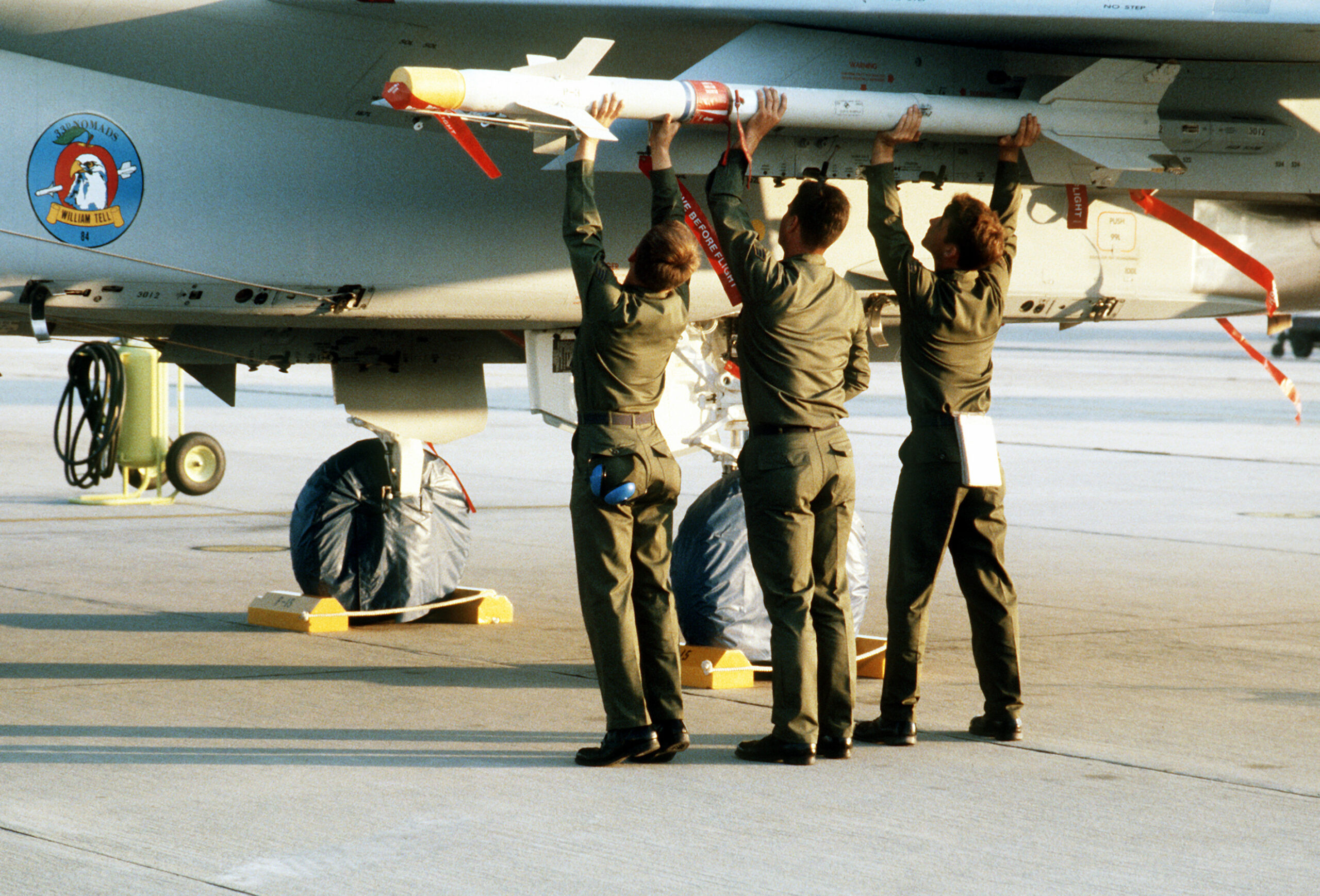
In 1982, Tactical Air Command officially changed the name of the meet to the USAF Air-to-Air Weapons Meet. That meet also marked the return of the Pacific Air Forces and the USAF in Europe to the competition, and the first appearance of the F-15 “Eagle”.
William Tell 1984 saw the introduction of the supersonic QF-100 full-scale drone as a William Tell target and was the first meet in which only full-scale drones were used as missile targets. In 1986, the CF-18 entered in the competition for the first time with the Canadian team, finishing second overall behind a TAC F-15 Team.
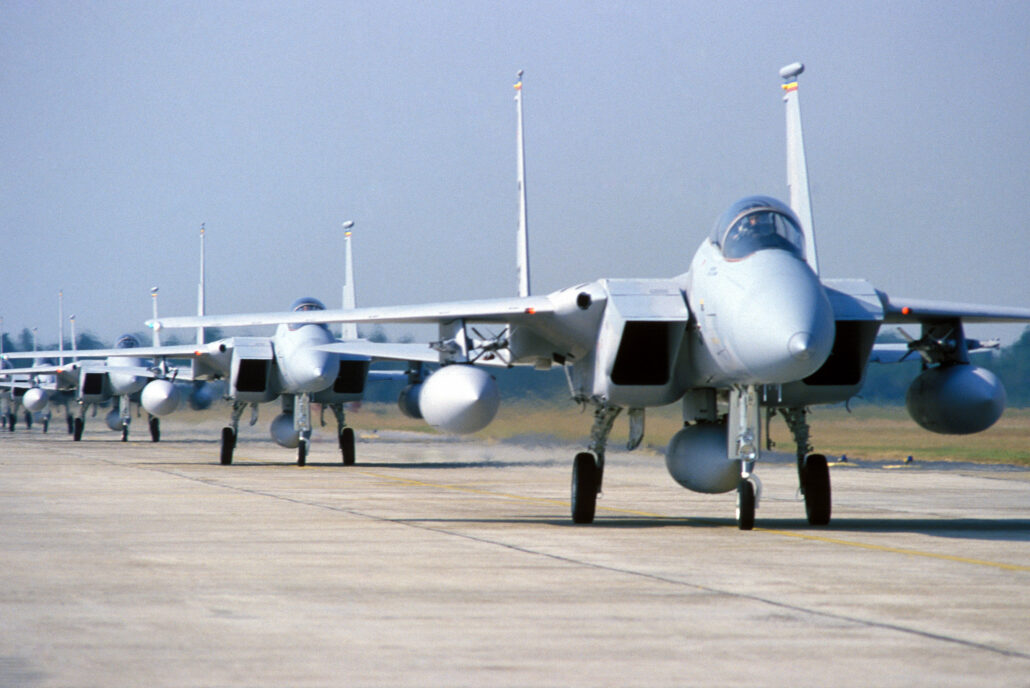
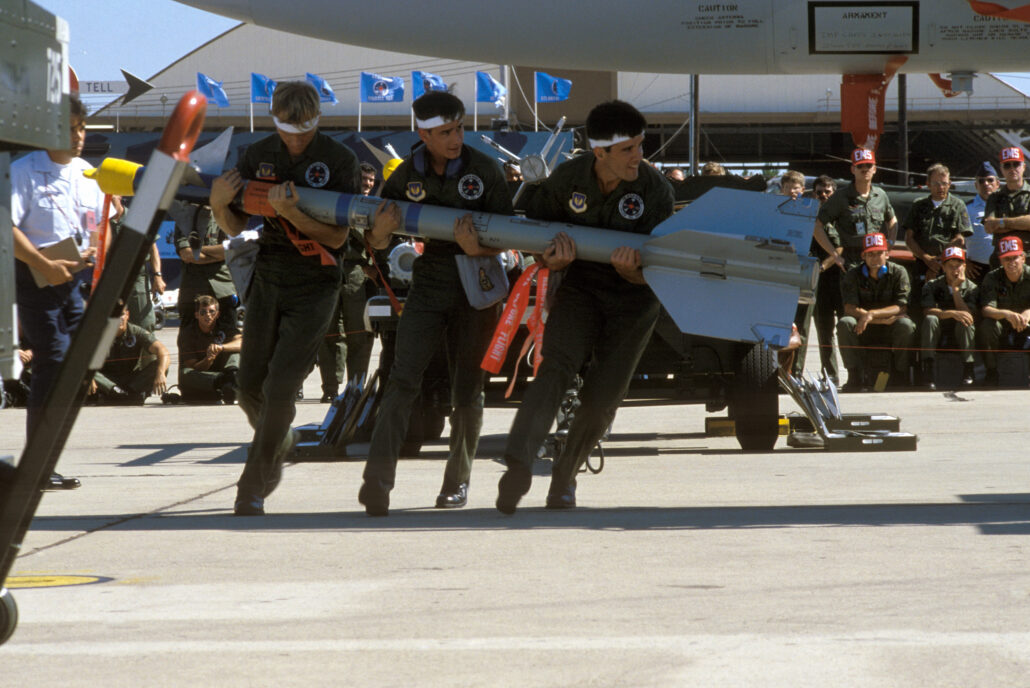
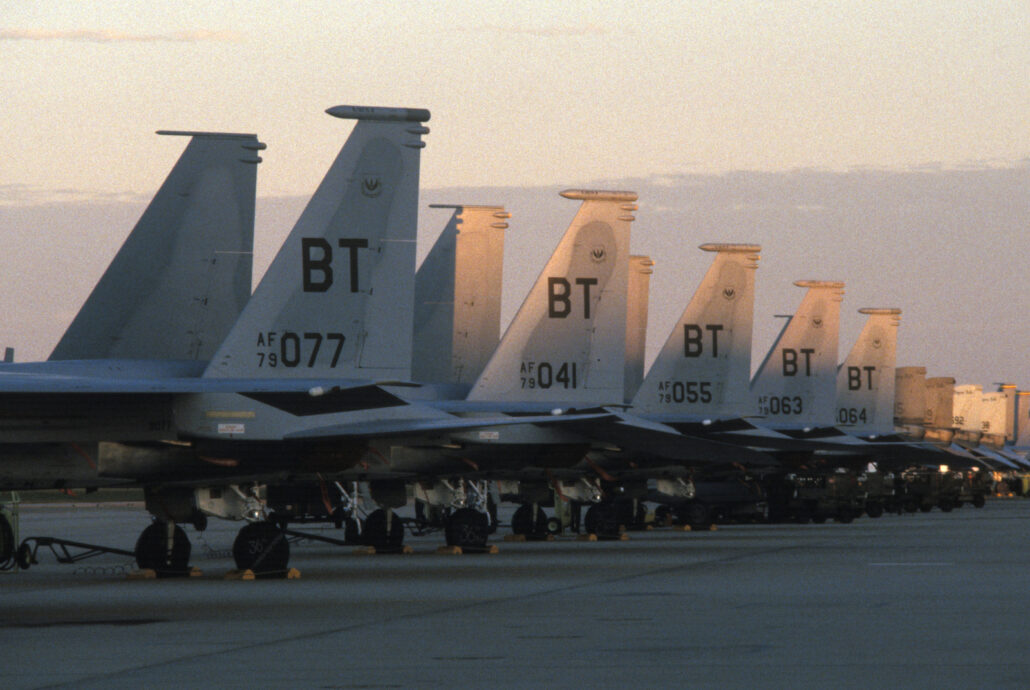
During the 1988 meet a total of twelve teams from TAC, ANG, PACAF, USAFE, Alaskan Air Command and Canada participated in on of the most competitive meets ever
The 1990 competition was cancelled due to Operation Desert Shield/Storm and resumed in 1992, held by the newly formed Air Combat Command. Eight teams competed and the 18th Wing from Kadena AB, Japan, walked away with the top team award for the second time.
Hosted by Air combat Command and the US Air Force Air Warfare Center, William Tell 94 gave the USAF’s best fighter units the opportunity to compete in all aspects of air-to-air operations.
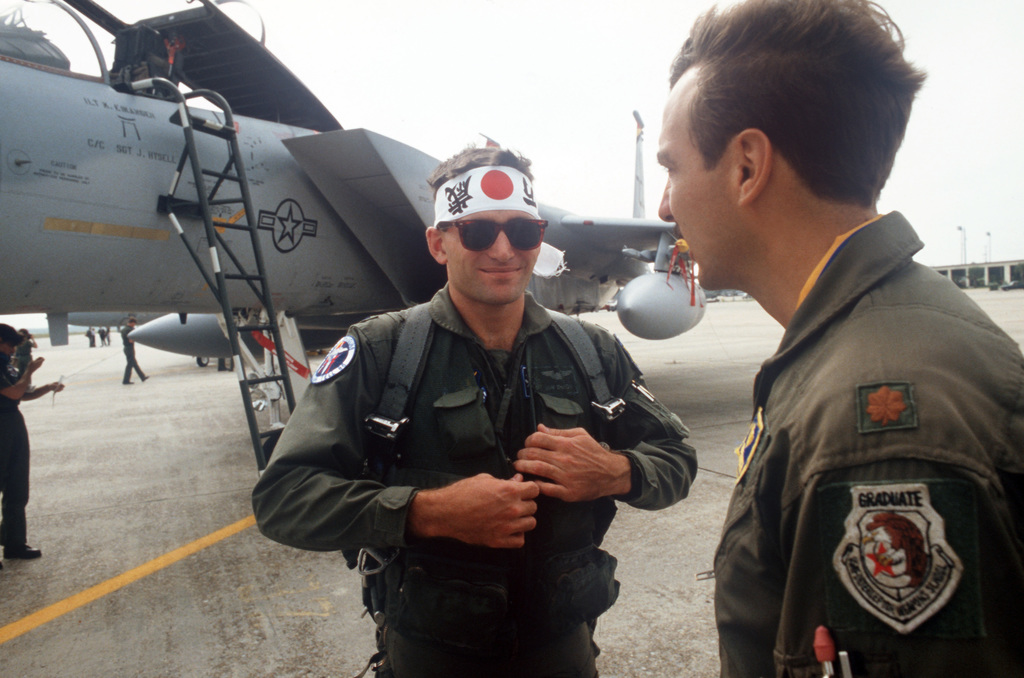
Beginning in 1996, Teams that attended the William tell Weapons Meet were to be assembled differently than the had been in the past. In previous Meets teams competed as units (Squadrons or Wings) , in the 1996 each major Command, the Air Force Reserve, the Air National Guard, and a combined Canadian team would compete against each other for the right to be known as the best in the Air.
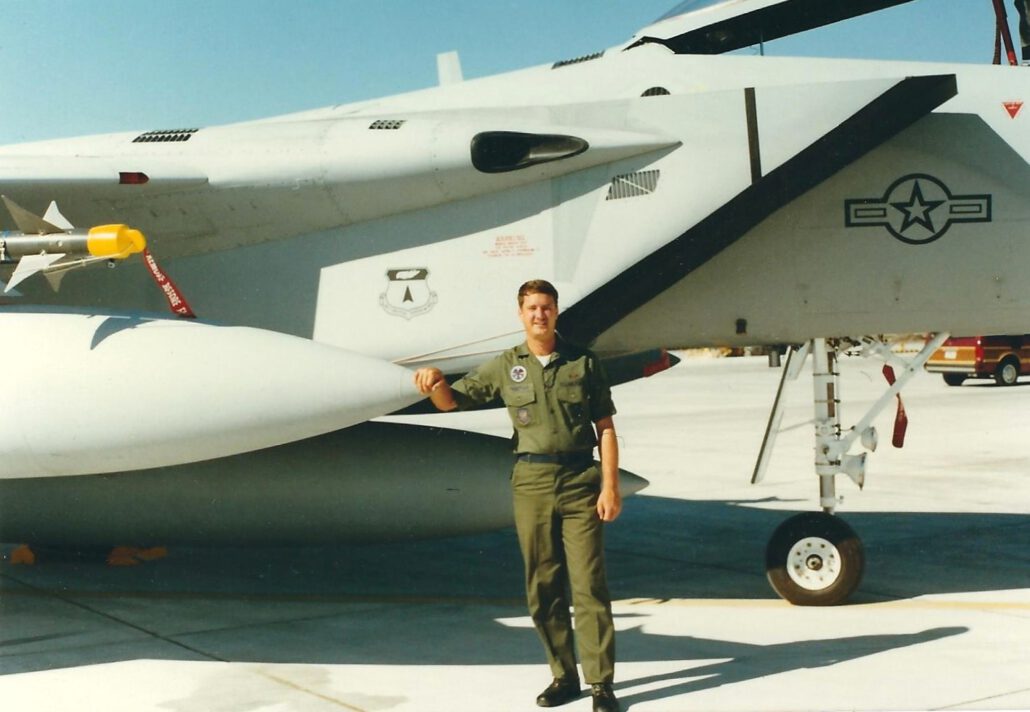
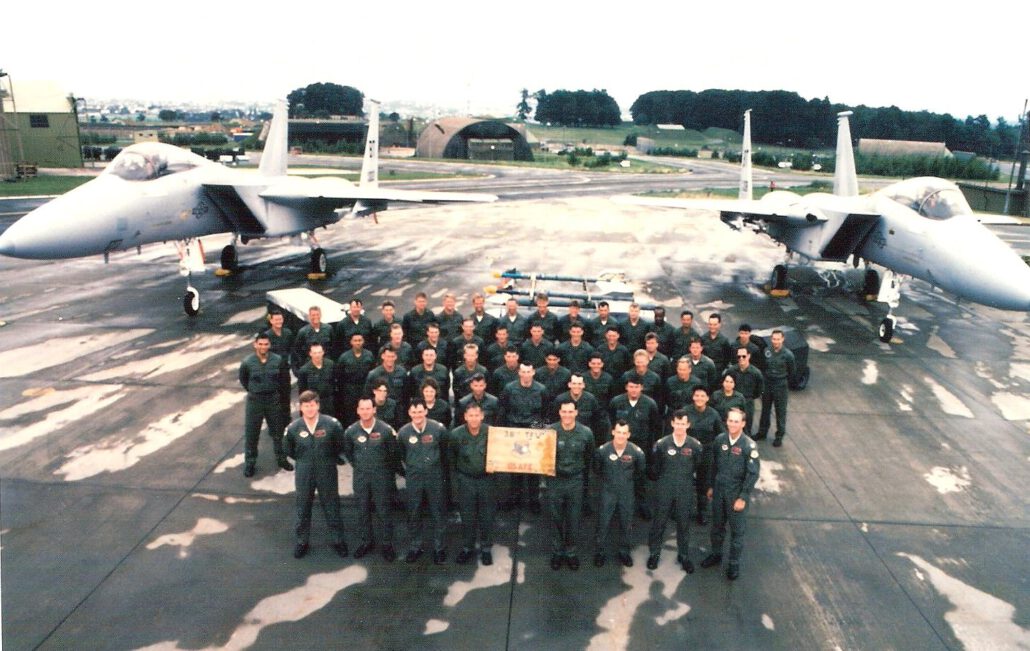
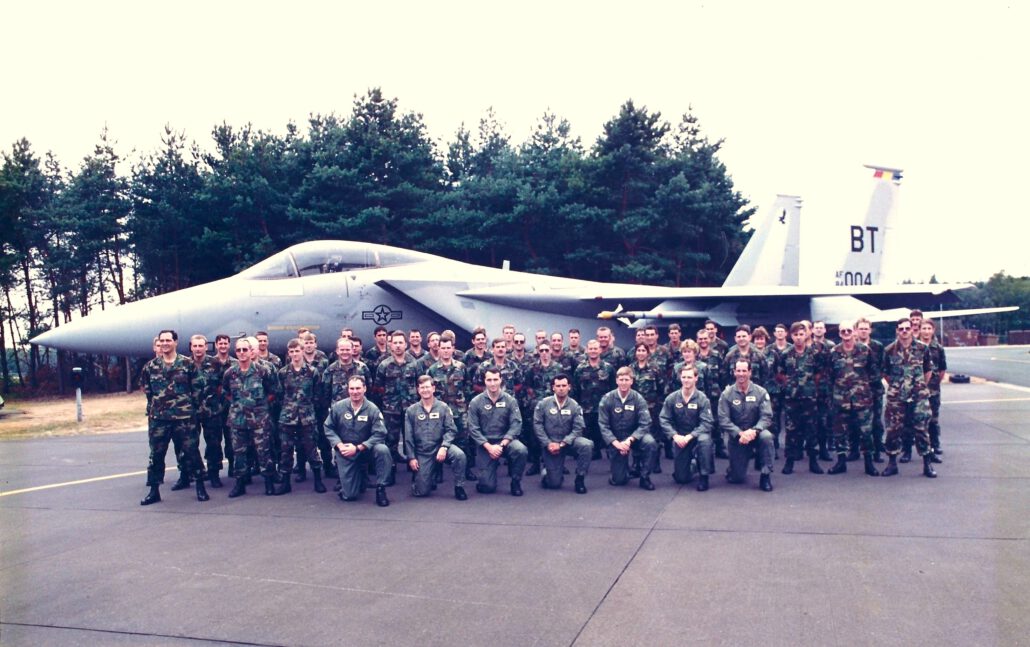
William Tell 2004
11/9/2004 – TYNDALL AIR FORCE BASE, Fla. (AFPN) — The U.S. Air Forces in Europe team jumped off to an early lead after officials kicked off William Tell 2004 here Nov. 8. The start marked the 50th anniversary of the Air Force air-to-air weapons meet.
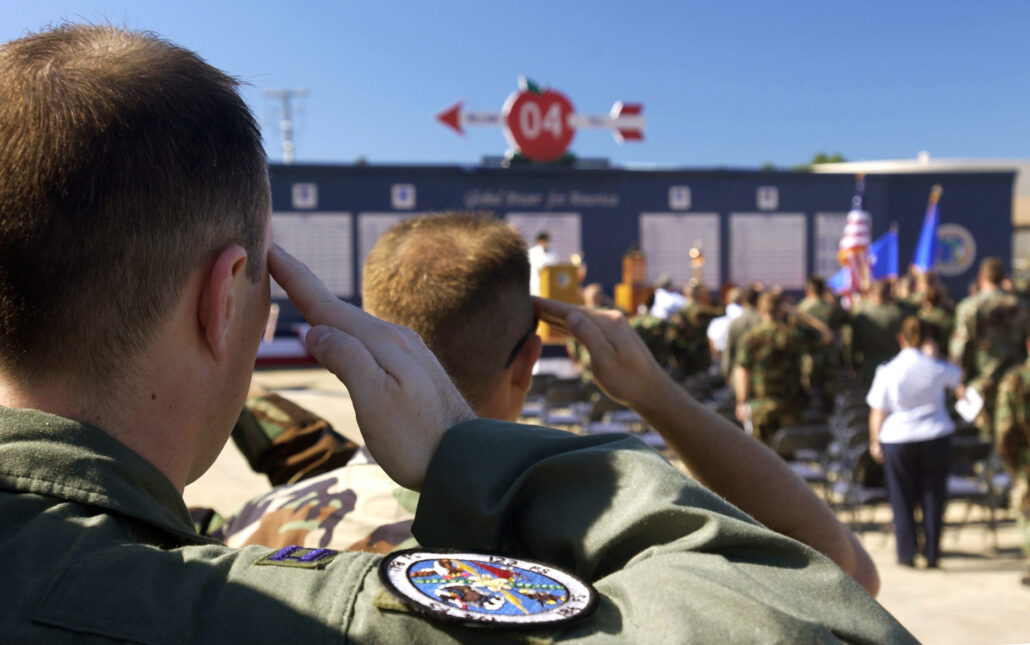
This year’s meet has put to rest the longest gap in its history after an eight year hiatus because of high operations tempo and participation in recent conflicts.
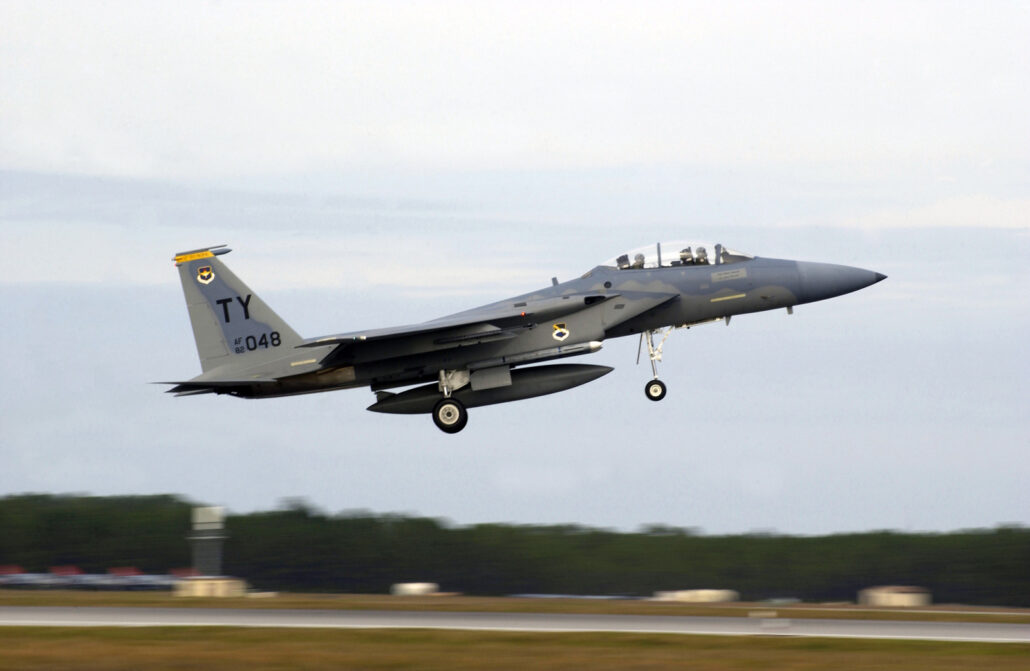
“Today, through the William Tell competition, we are testing the skill, strength and courage of the jet-age successors of the competition’s namesake,” said Lt. Col. Al Wimmer, 83rd Fighter Weapons Squadron operations director.
“The purpose of William Tell is to have aircrews perform under simulated combat conditions in order to test the proficiency of the air-to-air combat (professionals) and give the world a first-hand view of (the Air Force’s) superiority, readiness and capability,” he said.
Five major commands are represented by units flying the F-15 Eagle. Teams include:
— 71st Fighter Squadron from Langley Air Force Base, Va., representing Air Combat Command.
— 19th FS from Elmendorf AFB, Alaska, representing Pacific Air Forces.
— 95th FS from here representing Air Education and Training Command.
— 493rd FS from Royal Air Force Lakenheath, England, representing USAFE.
— Oregon Air National Guard’s 123rd FS at Portland representing the ANG.
USAFE posted a score of 1,268 out 1,500 flying Profile II in the meet. Scores are posted daily after they are verified.
The mission for Tyndall’s 53rd Weapons Evaluation Group Airmen for the next two weeks is focused all on William Tell.
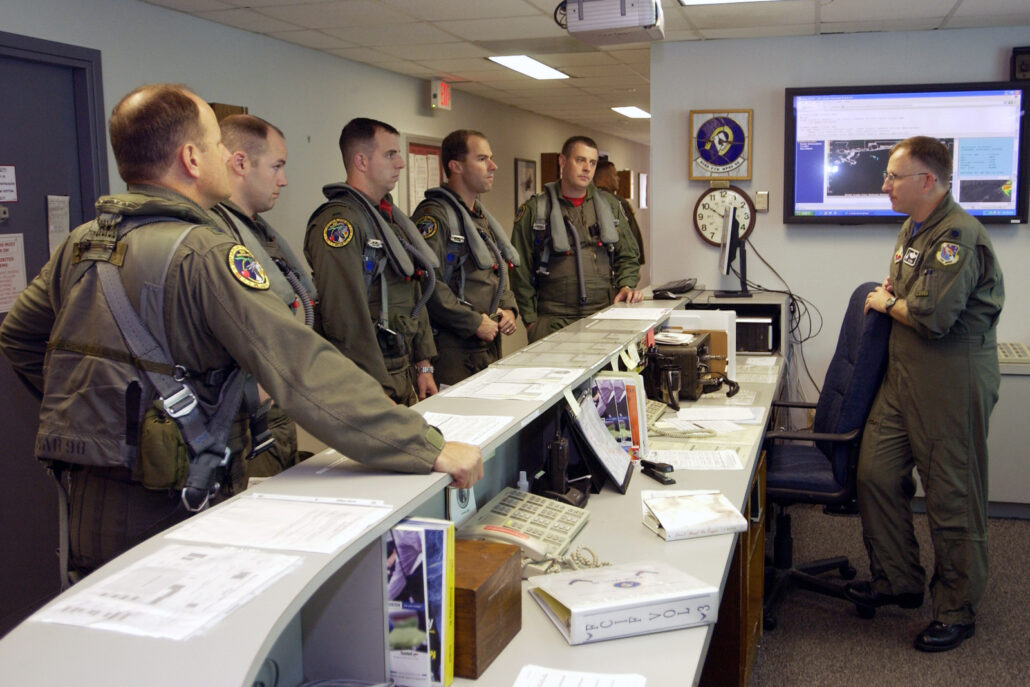
“It’s taken a dedicated effort from the (group’s) Airmen over the past year to pull this together — all without skipping a beat doing our normal mission,” said Col. Derek Hess, 53rd WEG commander.
The group’s normal mission includes conducting the combat air forces’ weapons system evaluation program — Combat Hammer for air-to-ground weapons, and Combat Archer for air-to-air weapons.
“Any past competitor would recognize what we’re doing at this year’s William Tell,” Colonel Hess said. “We have used William Tell’s rich history as a guide and have built William Tell ’04 to represent our 21st Century Air Force.
“Some things will never change. The competition is a test of our combat capabilities, and this year’s profiles reflect today’s air superiority mission,” he said.
William Tell 2023
SAVANNAH AIR NATIONAL GUARD BASE, Ga.– The Air Dominance Center, also known as the Savannah Combat Readiness Training Center, located here, will be the host venue for this year’s William Tell competition in coordination with Air Combat Command from Sept. 11-15, 2023, after a 19-year hiatus.
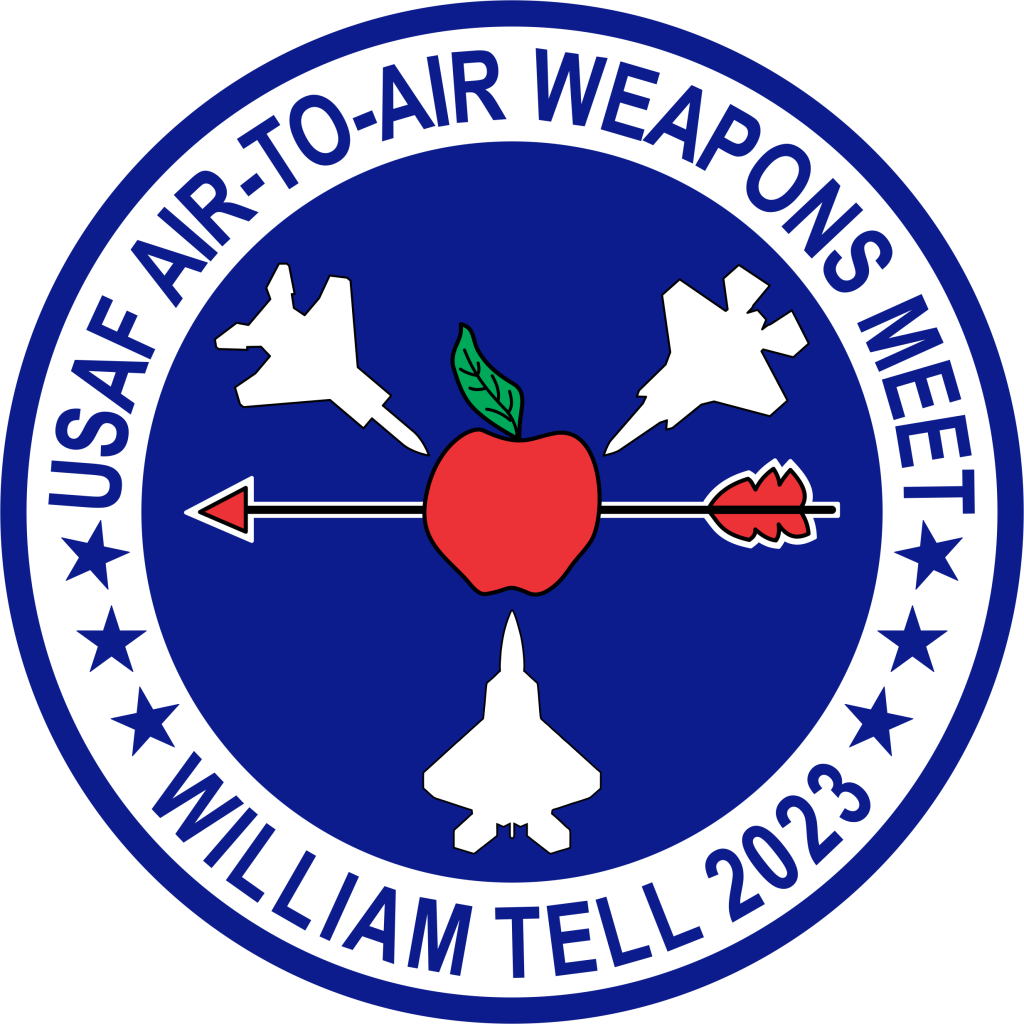
Nine different units, from active-duty, Air National Guard, and the Reserves will come together in a total force integrated environment to compete for both individual and team awards. For example, pilots will be tested on their offensive and defensive skills in maneuvers against enemy aircraft, and the best group will be hailed as the top “fighter integration team” in the Air Force’s very own version of “Top Gun”.
Units Participating:
AIR COMBAT COMMAND:
F-15E STRIKE EAGLE
4th Fighter Wing, Seymour-Johnson AFB, NC
366th Fighter Wing, Mountain Home AFB, ID
F-22 RAPTOR
1st Fighter Wing, Joint Base Langley-Eustis, VA
F-35 LIGHTNING II
388th Fighter Wing, Hill AFB, UT
PACIFIC AIR FORCES:
F-22 RAPTOR
3rd Wing, Joint Base Elmendorf-Richardson, AK
154th Fighter Wing, Joint Base Pearl Harbor-Hickam, HI
F-35 LIGHTNING II
354th Fighter Wing, Eielson AFB, AK
AIR NATIONAL GUARD:
F-15 C/D EAGLE
104th Fighter Wing, Barnes ANGB, MA
F-35 LIGHTNING II
158th Fighter Wing, Burlington ANGB, VT
C2 CAPABILITIES:
3rd Wing, Joint Base Elmendorf-Richardson, AK
18th Wing, Kadena Air Base, Okinawa, Japan
552 Air Control Wing, Tinker Air Force Base, OK
“If you’re into football, this is the Super Bowl, if you’re into baseball, this is the World Series and if you’re into golf, this is the Masters Tournament,” said Lt. Col. Stephen “Tracker” Thomas, the Air Dominance Center commander. “The airspace we have here on our coast is a national treasure and will allow the competing pilots the ability to operate to their absolute full potential to show who is truly the best of the best.”
The Air Dominance Center is conveniently located near several ideal training areas, including the Townsend Bombing Range and a military operations airspace ranging from Charleston, South Carolina to Orlando, Florida that makes it a one-of-a-kind training location for warfighters across the Department of Defense.
“We are a center that brings in units from across the country and provides a training venue like no other,” said Thomas. “We give Airmen the opportunity to train to their full operational level and that is exactly what these nine units attending the William Tell meet are going to do here in September,” said Thomas.
The historic competition, which has not been held since its 50th anniversary in 2004 due to the War on Terror, will simulate a multitude of air combat scenarios with 4th and 5th generation fighter aircraft acting as enemy “red teams” to prepare Airmen for real-life combat.
Thomas said there will be two events per day, with one launch starting around 8:00 a.m. and a second beginning in the afternoon around 1:00 p.m. each day. There will be a scoreboard announcement each evening that will be posted on social media and other channels that will be officially announced near the start of the competition.
“We want our community to be excited about this upcoming event and include them as much as possible,” said Thomas. “Although this event will not be open to the public, there will be plenty of jet sighting opportunities in the local area as well as photo and video coverage of the event published for public viewing.”
Willam Tell photos
